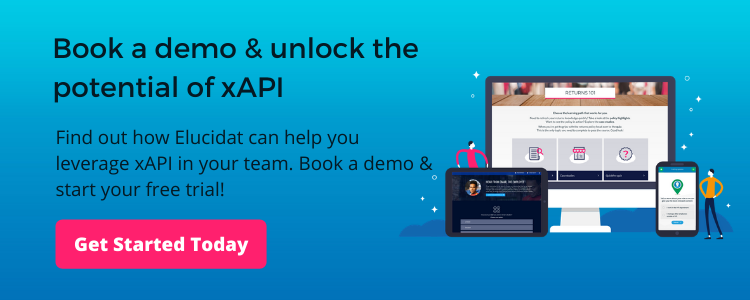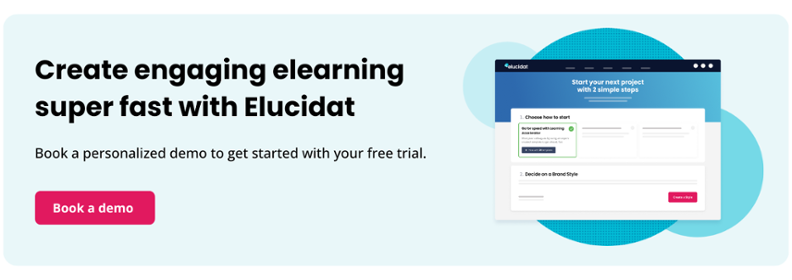SCORM vs AICC: which is the best?
4 minute read
Designing SCORM compliant elearning means that it’s set up in a way that lets it work with any of the major LMSs. Another set of standards that has the same aim is AICC. SCORM is much more widely used today, but that doesn’t mean we can forget about AICC entirely. When it comes to SCORM vs AICC, though, how do you choose which is best for you? Let’s look at both in more detail.

What is SCORM?
SCORM is a set of packaging standards that means once your elearning is set up with the right file structure, uploading a course to the LMS is just a matter of uploading a .zip file. SCORM stands for Shareable Content Object Reference Model.
There are several versions of the SCORM standards. The most widely used and supported are SCORM 1.2 and SCORM 2004 (also know as SCORM 1.3)
What is AICC?
AICC is a standard for developing corporate elearning courses. AICC stands for Aviation Industry CBT (Computer-Based Training) Committee. When these standards were originally set up in 1993, they only focused on CD-ROM based training. Web-based training was factored in later, in 1998.
AICC talks to the LMS by sending HTTP messages and then interpreting the responses the LMS sends back. Uploading content to an LMS using AICC is usually a lengthier process than using SCORM.
SCORM vs AICC
So how do SCORM and AICC compare? Whether you choose SCORM or AICC, there are pros and cons to both standards. Here, we delve deeper into the features of both, shining a light on what you can expect to experience from them.
SCORM strengths
It’s easy to follow. Many elearning authoring tools let you create a course with SCORM output without any programming knowledge.
It lets you control learner pace. You can manage your learner journey to an extent by specifying how long they should spend on an interactive element.
It’s widely supported. SCORM is the most popular set of standards for course creation and LMSs, so if you have SCORM compliant elearning, you’ll have no shortage of LMSs to choose from.
SCORM weaknesses
There’s a limit to what it can track. SCORM lets you monitor basic data like whether a learner has completed a module and their overall score, but it won’t let you track anything more detailed than that.
It doesn’t work offline. SCORM elearning needs an internet connection. If it drops out, learners will be dropped out of their course. Elearning SCORM course only work when they’re launched from an LMS, so web or mobile based courses are no good either.
It was designed for Flash. SCORM was originally intended for Flash-based courses, which aren’t a popular option now that support for Flash is fading. HTML5 courses can be created for SCORM compliant learning management systems, but it limits their functionality.
AICC strengths
It’s very secure. AICC supports highly secure HTTPS data transfers between the content and the LMS and AICC content can also be kept on a separate server to its LMS.
AICC weaknesses
It can’t track progress. AICC’s tracking and reporting mechanism are very limited.
It’s hard to find a compliant LMS. LMSs which claim to be AICC compliant may not actually work when it comes to upload your course. Manual code tweaks often need to be made to ensure compatibility.
It’s unpopular. AICC is a very dated set of standards now, so support is limited. Both LMS and content providers are generally opting to leave it behind now.
What about xAPI?
xAPI (also known as Tin Can) is a much newer set of standards (developed in 2011) that aimed to significantly improve corporate elearning standardization.
xAPI works by defining learning activities using “noun, verb, object” statements (for example “Jennifer passed an assessment.”). When a user performs a learning activity, the xAPI activity statement is recorded and stored in a learning record store (LRS).
xAPI is a step up from SCORM in terms of what it offers. It works offline so users can complete learning wherever they are. It doesn’t even need a web browser to run. It also offers much more sophisticated reporting, keeping track of a whole range of user activities from where they clicked their mouse to blended learning courses they’ve completed.
xAPI’s main drawback is that it isn’t yet widely supported. This means it’s not as easy to find a compatible LMS as when you’re creating a SCORM compliant module. But this is likely to be a short term issue – its popularity is growing every day.
To find out more about how xAPI and SCORM compare, take a look at this detailed SCORM vs xAPI comparison.
Summary
To give you an overview, here’s a bird’s eye view of each software standard alongside its strengths and weaknesses!
| AICC | SCORM | xAPI | |
| Ease of use | Average | Good | Good |
| Tracking capabilities | Poor | Average | Good |
| Support | Poor | Good | Average – but growing |
| Security | Good | Average | Good |
SCORM is streets ahead of AICC, and is still the main player in the industry, but xAPI offers some truly exciting possibilities, so support for this new standard is only likely to grow.
Try it for yourself
Start producing SCORM-compliant elearning content, with xAPI driven analytics today with Elucidat. Book a personalized demo today, and we’ll get your free trial off to a flying start.
Stuck Using PowerPoint? This PowerPoint to SCORM guide can help you quickly convert your slides into SCORM-compliant content, unlocking all the benefits of tracking, interactivity, and LMS compatibility





